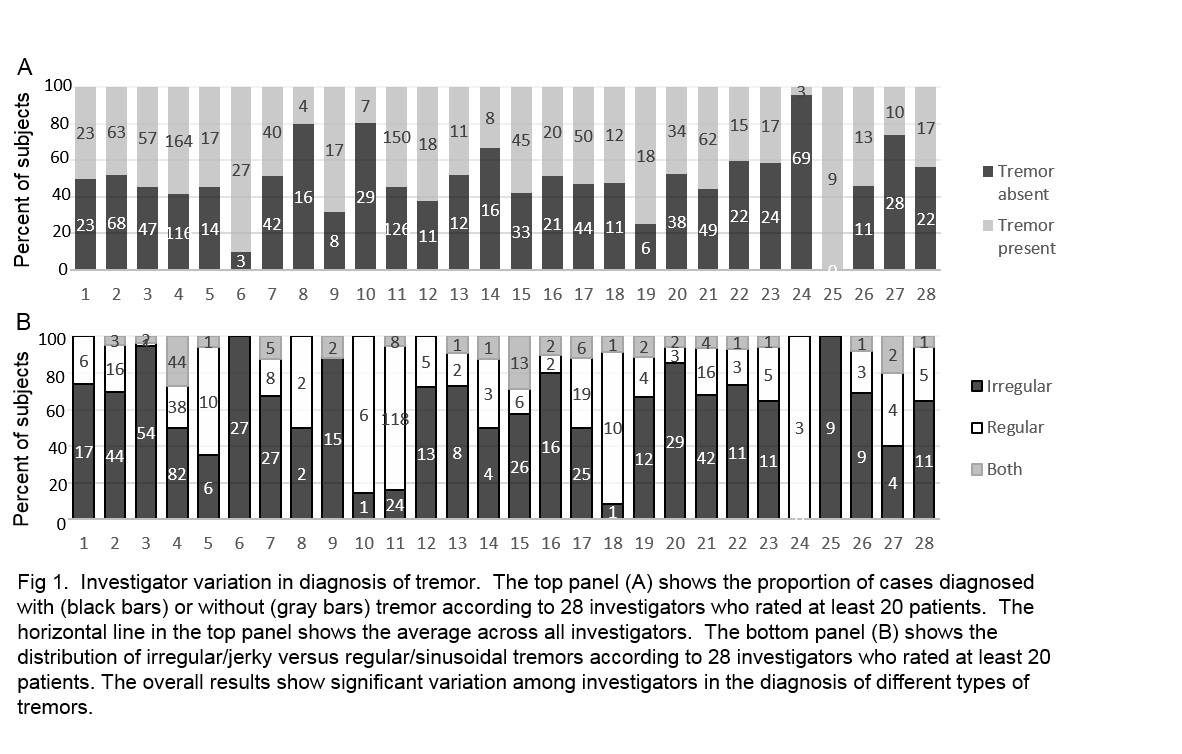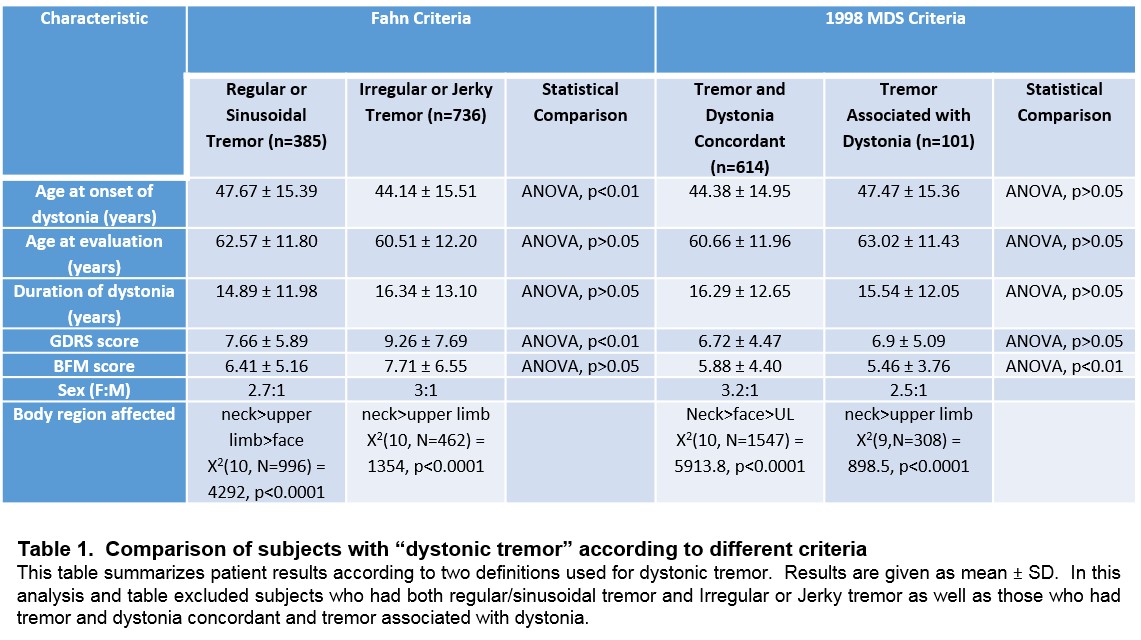Session Information
Date: Sunday, October 7, 2018
Session Title: Dystonia
Session Time: 1:45pm-3:15pm
Location: Hall 3FG
Objective: To understand the relationship between dystonia, tremor, and dystonic tremor.
Background: Dystonia and tremor are distinct but frequently co-occurring movement disorders. The particularly ambiguous issue is the dystonic tremor, where a dystonic disorder is thought to mimic a tremor. Efforts to provide clinically useful diagnostic criteria and a consistent definition of dystonic tremor led to controversies. In by far the largest cohort of dystonia patients we asked whether the prevalence of dystonic tremor varies according to the way it is defined. We also ask whether rating philosophy of the clinical examiner determines the prevalence of dystonic tremor.
Methods: Prospectively designed, multi-center study.
Results: We describe the prevalence of different types of tremors across different body regions in a cohort of 2362 patients with various isolated dystonia syndromes (focal, segmental, multifocal and generalized). The overall prevalence of any tremor in this cohort of dystonia patients was 53.3%. The overall prevalence of dystonic tremor varied according to the different criteria used to define it. When dystonic tremor was defined as an irregular/jerky tremor regardless of whether the same body region also had overt dystonia according to the original Fahn criteria (Fahn, 1984), the overall prevalence of dystonic tremor was 36.9%. When dystonic tremor was defined by its co-occurrence with overt dystonia regardless of oscillation regularity (Deuschl et al., 1998), the overall prevalence was 48.4%. The differences in population characteristics of dystonic tremor patients are summarized in Table 1. Classification of regular versus irregular tremor was also subjective, and rater dependent; Fig 1 depicts such inconsistency.
Conclusions: A large number of patients and multi-site design facilitated the dissection of several important factors that significantly influence the prevalence of dystonic tremor. The results provide useful insight into the current controversies in literature inconsistencies regarding the nosology of tremor in dystonia.
References: Fahn S. The varied clinical expressions of dystonia. Neurol Clinics 1984; 2: 541-54. Deuschl G, Bain P, Brin M. Consensus statement of the movement disorder society on tremor. Mov Disord 1998; 13 Suppl. 3: 2-23.
To cite this abstract in AMA style:
A. Shaikh, A. Rosen, L. Scorr, A. Cotton, R. Barbano, C. Testa. Dystonia, Tremor, and Dystonic Tremor [abstract]. Mov Disord. 2018; 33 (suppl 2). https://www.mdsabstracts.org/abstract/dystonia-tremor-and-dystonic-tremor-2/. Accessed December 25, 2025.« Back to 2018 International Congress
MDS Abstracts - https://www.mdsabstracts.org/abstract/dystonia-tremor-and-dystonic-tremor-2/


